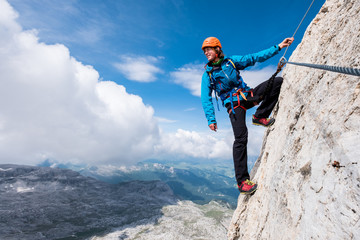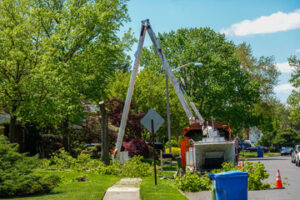Alta Boulders offer a fun and challenging outdoor experience for people of all ages. From popular city attractions to awe-inspiring wilderness, Boulder has something for everyone.

Leaving behind the ropes and harnesses of roped climbing, bouldering strips the sport to its core essentials: climbers use climbing shoes and chalk over safety mats to tackle short but tricky bouldering “problems” (a route) using balance, technique and strength. Bouldering is popular with outdoor newcomers to rock climbing, as well as more experienced climbers looking for a different kind of challenge.
The complexities of bouldering make it a highly engaging form of physical activity. Its mental challenges, social interaction, and sense of accomplishment boost overall wellbeing.
It increases muscle strength and endurance, as well as flexibility and cardiovascular fitness. It also improves grip strength through training exercises such as finger boards, campus rungs and a variety of other holds. However, it is important to take care with your hand tendons and ligaments when starting out, particularly as some of the more advanced bouldering techniques require intense pressure on your hands. Using rubber finger extenders can be helpful and is recommended for beginners to avoid straining their tendons and ligaments.
Bouldering is often done in groups at a climbing gym or natural site, creating an exciting and social atmosphere. It also promotes healthy competition by encouraging participants to push themselves to climb harder and higher.
Climbers can practice basic bouldering techniques in a climbing gym, or they can search online for local climbing spots. Typically, the best areas will have a large collection of boulders of varying shapes and sizes, with routes ranging from easy to eye-wateringly difficult. Search online for your nearest bouldering spot, or ask a friend or local climber to recommend one. You may also want to join a local climbing club, which can provide training and coaching as you progress.
Rock Climbing
Rock climbing is a full-body workout that combines strength, agility and endurance with an aerobic and anaerobic component. Achieving new levels of difficulty on each climbing route presents a unique challenge for novices and professionals alike, and helps cultivate a sense of confidence, resilience and inner strength. While the sport requires some specialized equipment, such as a harness, shoes and chalk, beginner climbers can start out with basic movement skills at a local indoor gym or with a climbing guide before investing in a complete set of gear.
Unlike indoor climbing walls where routes are pre-set and marked with color coded holds, outdoor climbs offer an expansive natural environment with dizzying heights that can be both exhilarating and intimidating. The heightened exposure can be psychologically challenging for climbers who must manage fear, evaluate risks objectively and develop a system of positive reinforcement to overcome the mental barriers that come with scaling cliffs and multi-pitch routes.
To build the foundation for successful outdoor climbing, novices can enroll in a class at a local climbing gym or with a guide to learn basic movement skills and the requisite safety protocols. Climbers should also take the time to familiarize themselves with their crag, including reading up on the approach and learning how to locate routes using a guidebook and proper outdoor climbing etiquette.
To prepare for the physical and mental challenges of outdoor climbing, novices should use progressive muscle relaxation, controlled breathing techniques and visualization to reduce anxiety and tension, incorporating these strategies into their pre-climb rituals. It is also helpful to surround themselves with supportive climbing partners who can offer encouragement and reassurance as they work their way up to more difficult climbs. And above all, climbers should never push themselves beyond their current level of comfort and remember to retreat if conditions or the fear becomes overwhelming.
Mountain Biking
Mountain biking is an incredibly fun and challenging outdoor activity that can be enjoyed by people of all ages. This thrilling sport delivers a variety of physical and mental health benefits. It can also be an excellent way to build confidence and self-esteem while bonding with friends and family members.
For beginners, XC trails (cross-country mountain bike) are a great place to start. These trails are typically less steep and require less advanced skills. They often traverse through scenic backcountry terrain that offers breathtaking views. Additionally, these trails are designed with beginner riders in mind so that they can get a taste of the mountain biking experience without the risk of falling off of their bikes or getting injured.
More advanced mountain bikers can enjoy more technical trails that feature a combination of natural and man-made obstacles. These obstacles can include rock gardens, drops, skinny log rides and wooden ramps. Some of these trails can be quite challenging for beginners since they may require them to navigate over a series of obstacles at high speeds.
The physical aspect of mountain biking provides a well-rounded workout that targets many different muscle groups. It improves cardiovascular fitness, builds strength and enhances balance and coordination. In addition, mountain biking can help people manage their weight by burning calories efficiently.
The beauty of the outdoors can be a wonderful distraction from everyday life. The trails at Nathan Hale-Ray Middle School are a perfect example of this. The trail systems offer stunning scenery that showcase the unique features of the area’s flora and fauna. In addition to its natural beauty, the trail system also fosters a sense of community involvement and responsibility among local mountain bikers.
Hiking
Hiking is a great way to immerse yourself in nature. It can be a relaxing activity or an exhilarating adventure. You can enjoy stunning scenic views or even encounter wildlife. It’s also a great way to exercise and stay healthy. If you’re looking for a more challenging hiking experience, try exploring a boulder field.
Boulder fields are a unique type of terrain that can challenge even the most experienced hikers. They consist of large rocks that have been rounded and weathered by the elements. These rocks are often used in bouldering, which is a sport that involves climbing over these stones. Many people find these trails to be a bit more difficult than traditional hiking trails, because the rocks require more agility and can create an unstable environment.
Part of what makes bouldering so interesting is the fact that it is a highly subjective activity. One person’s idea of a hard boulder problem can be vastly different from another’s, depending on their size and physical strength. In addition to this, bouldering grades are not necessarily indicative of a person’s skill level – they simply reflect the difficulty of a particular problem.
When you’re hiking in a boulder field, it’s important to plan ahead and be prepared for any unexpected challenges that may arise. Make sure to bring enough water and snacks for the day and check the weather forecast before heading out. You should also carry a flashlight and extra batteries for your phone in case of an emergency. Moreover, it’s a good idea to pack some extra clothing and shoes just in case of a change in weather. Additionally, it’s a good idea to carry some compostable trash bags so that you can pick up any litter as you go. This will help keep the backcountry clean and contribute to a positive impact on the environment.
Water Sports
Water sports are fun, challenging, and exciting outdoor activities that get you up close and personal with the wondrous world beneath the ocean or lake waters. Surfing and bodyboarding, or boogie boarding, are active ways to have some fun on wavy ocean waves while snorkeling is a peaceful way to explore the underwater world. Kayaks and canoes are a relaxing way to cruise along a calm river or lake, or you could try white water kayaking on a river that is wild enough for some excitement.
If you are looking for an adrenaline rush, try jet surfing – a high-adrenaline mashup of surfing and snowboarding in which feet are strapped into a wake board with bindings like snowboarders, pulled behind a speed boat or in a specialty lake park on a cable system, skimming the surface of the water and performing flips and other tricks.
This activity requires teamwork to maintain balance, synchronize steps, and overcome obstacles. It is a great way for teams to practice communication and collaboration as they work together in this playful and engaging outdoor activity. This is a good activity for open parks and fields. Just be sure the outdoor venue is big enough so that you don’t accidentally squirt anyone!


